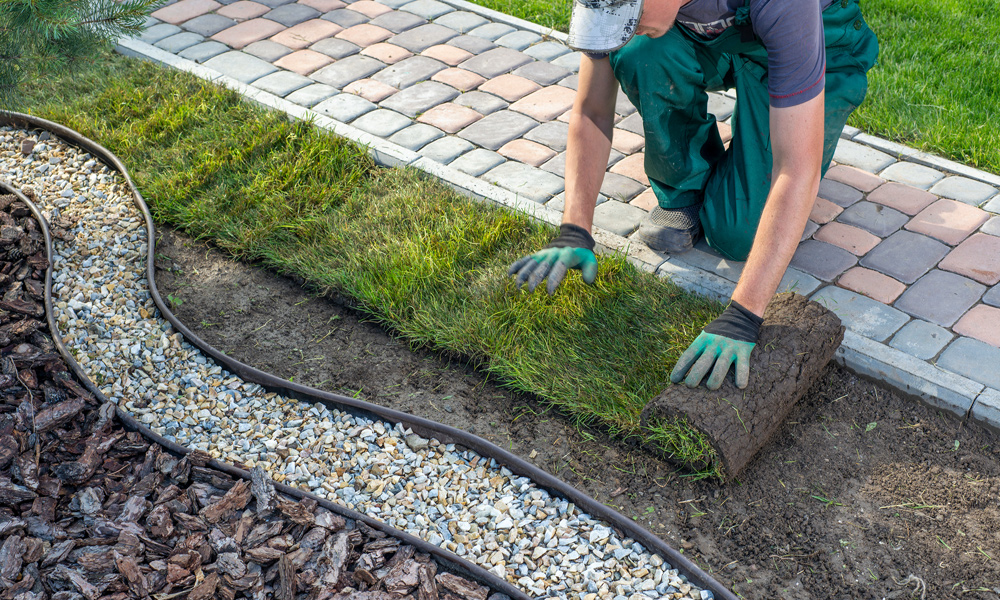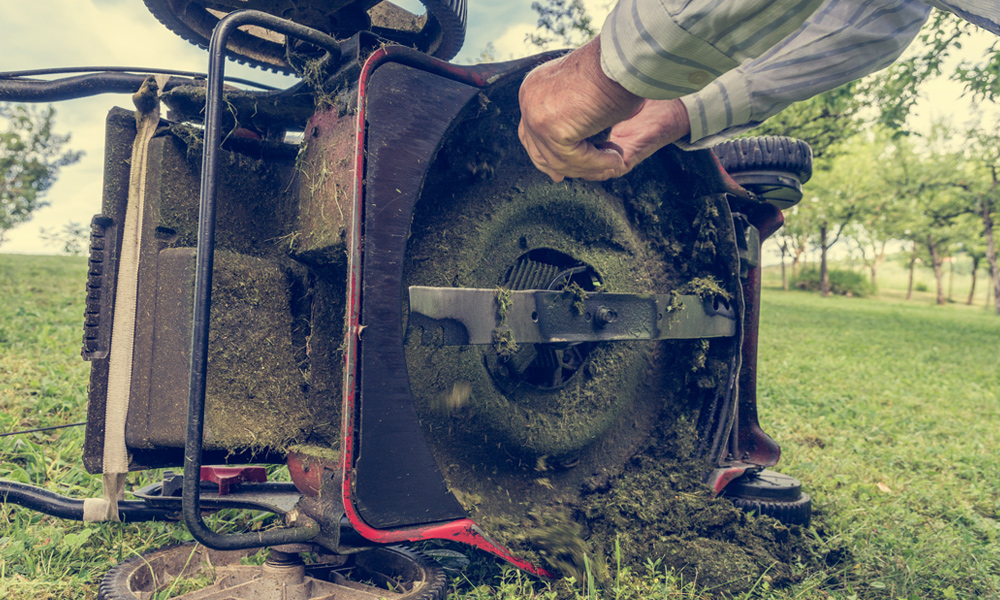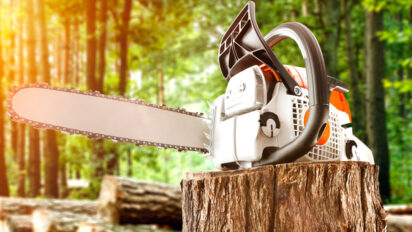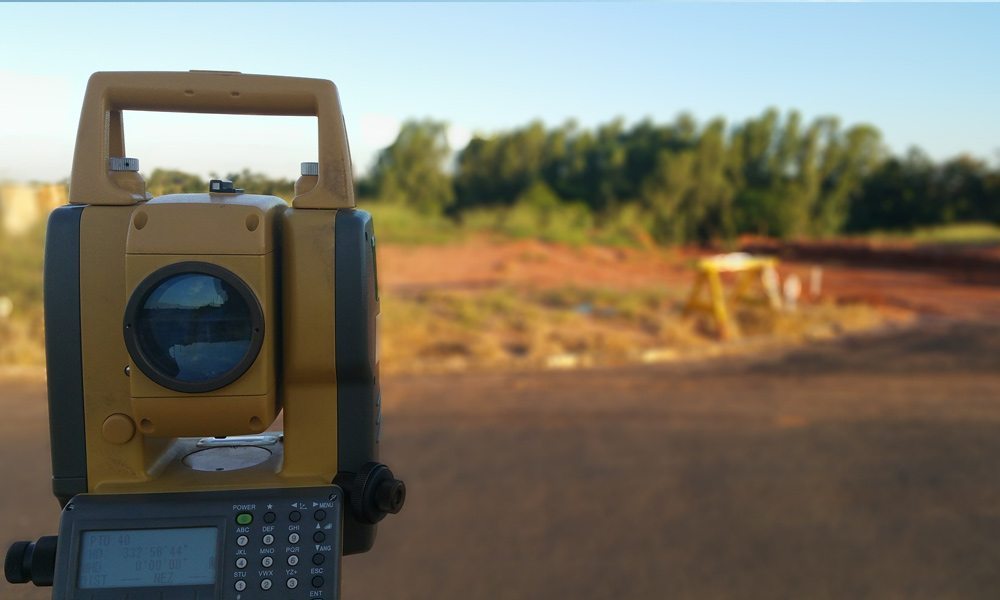Tools & Equipment
Top 10 Chainsaws of 2023: Ultimate Guide & Reviews
May 9, 2023Explore the best chainsaws in 2023 to find the perfect tool for yard work, tree cutting, or firewood needs. Learn about top-rated gas, electric, ...
More from Tools & Equipment
Chainsaws 2023Chainsaw Sharpeners 2023Digital Caliper 2023How does a Laser Level Work?How to Connect a Generator to Your House: The Ultimate GuideHow to Make a Generator Quiet: 9 Proven MethodsElectric ChainsawsHow to Change a Jigsaw Blade: In 5 Easy StepsLaser LevelsChop SawsBelt SandersHammer DrillsDrill PressesRandom Orbital SandersJigsawsReciprocating SawsTIG WeldersAir CompressorsAxesSpace HeatersLaddersRatchets60 Gallon Air CompressorsWork Jeans30 Gallon Air CompressorsMiter SawsHow to Read CalipersSafety GlassesWork GlovesPortable Air Compressor For CarWinter Coats for Extreme ColdEDC FlashlightsBenchtop JointersHeated JacketsHow to Vent a Garage Heater?Tool SetsHow Does a Nail Gun Work?Reciprocating Saw vs. JigsawHow to Use a Sliding Miter SawWhat Do You Use a Brad Nailer For?How to Charge a Solar Charger?Air Compressor CFM GuideHow to Change a Dewalt Chop Saw Blade?What is The Difference Between a Chop Saw and a Miter Saw?Finish NailersProfessional ChainsawsWhat are Table Saws Used For?Welding HelmetsWhat Kind of a Nail Gun Do I Need?Air Compressor Piping Diagrams and TipsWhat is a Circular Saw Used For?What Is A Dual-Bevel Miter Saw?How to Use a Track SawHow Does a Generator WorkWhat Size Heater Do I Need For My Garage?What is a Brushless Drill?How do Portable Generators work?How To Use a Paint Sprayer With an Air CompressorInfrared HeatersCorded Drills 2020Oscillating Tools12v Air Compressor 2022How To Sharpen Drill Bits By Hand?Angle GrindersDrill BitsHow to Load a Nail Gun?Soldering IronsMIG WeldersChainsaw ChapsWhat Are Angle Grinders Used For?The History of the DrillIs a Corded Drill Better Than a Cordless?What Size Angle Grinder Should I buy?Drill Bit SharpenersPortable Air CompressorsWhat is a Track Saw Used For?How do Solar Panels Work?Table SawsTrack SawsCordless Impact WrenchesSliding Miter SawsBench VisesPocket Hole JigsWhat Size Generator Do I Need To Run A RefrigeratorHow to Build a GeneratorHow to Wire a Generator to a Breaker BoxHow to Connect a Generator to a House Without Transfer SwitchVoltmeter vs. Multimeter: What Do You Need?PVC Pipe CuttersConstruction BootsWood Burning ToolsWork PantsElectric Hand PlanersRoofing NailersWood Carving ToolsTool BrandsSpeed SquaresPlasma CuttersPliersChainsaw MillsWood RoutersRespiratorsElectric ScrewdriversWork BootsEar PlugsHearing Protection For Lawn MowingSteel Toe BootsBluetooth Hearing ProtectionsShooting Ear ProtectionsHearing ProtectionTool ChestsHard HatsWhat is an Impact Driver Used For?Scroll SawsSocket OrganizerWoodworking ToolsLED Work LightsBenchtop Drill PressMiter Saw StandsRotary Laser LevelsWorm Drive SawsPlunge RoutersDryer VentsImpact DriversDrywall AnchorsPlanersLaser MeasuresStud FindersCordless ScrewdriversBench GrindersRouter BitsButane TorchTool BeltsTap and Die SetsRotary ToolsMechanical PencilsSharpening StonesKeychain FlashlightHeat GunsWood LathesBand SawsTape MeasureMultimetersTorque WrenchTool BoxesMulti ToolsFlashlightsPortable Air Compressor For Truck TiresCalifornia Air Tools 4620A & Buyers GuideMakita AC001 & Buyers GuideHybrid Table SawsPortable Table SawsSaw HorsesDrywall LiftsTile SawsAir Compressor Maintenance GuideHow to Use An Air Compressor?How to Refill Co2 Tank with Air Compressor?Air Compressor Installation GuideHow to Adjust Air Compressor Pressure Regulator?How To Use A Porter Cable Air Compressor?How to Adjust Cut-out Pressure on an Air Compressor?Air Compressor Safety TipsHow to Quiet an Air Compressor?How to Increase CFM on an Air Compressor?How to Drain an Air Compressor?Air Compressor Sizing GuideCampbell Hausfeld 20 Gallon Air Compressor & Buyers GuideCalifornia Air Tools 10020C & Buyers GuideAudew Portable Air Compressor Pump & Buyers GuideCalifornia Air Tools 8010 & Buyers GuideDewalt 6 Gallon Air Compressor & Buyers GuideCalifornia Air Tools 5510SE & Buyers GuideEmax Compressor & Buyers GuideMakita Mac2400 & Buyers GuideMakita Mac700 & Buyers GuideCampbell Hausfeld 3 Gal Air Compressor & Buyers GuideAir Compressor For Home GaragesShop Air Compressor20 Gallon Air CompressorsSmall Air CompressorRouter TableGrease GunSmall ChainsawTelescoping LaddersScrewdriver SetsHot Glue GunsBrushless Impact Drivers Track Saw System?What to Look For In a 18v Cordless Drill?What is a Sliding Miter Saw?18v Cordless DrillsWhat Size Sliding Miter Saw Do I Need?How to Use a DeWALT Drill?How to Change a DeWALT Drill Bit?Do Solar Powered Generators Work?How Does a Solar Generator Work?Dewalt DrillsWhat is a Solar Generator?What are Solar Mobile Phone Chargers?What Portable Solar Panels for RV?How are Hammers Made?Can you get a Solar Charger for a Laptop?What is A Right Angle Drill?How to Use a Hammer?What size Finishing Nails for Baseboards?What Right Angle Drill Attachment Should i Get?Types of HammersFinish Nailer VS Brad NailerWhat Is A Miter Saw?HammersHow to use a Finish Nailer?Right Angle DrillsWho Makes The Finest Cordless Impact Driver?How Do You Square a Miter Saw?How to Charge a Car Battery?What size Circular saw to Get?What is a Cordless Impact Driver Used For?What are some other Built-in or Additional Features of a Miter Saw?Reciprocating Saw Blade Types?Cordless Impact DriversThe Different Circular Saw Blades?How long does it take to charge a car battery with a 12 volt charger?When to use a belt sander?Cordless Circular SawsWhat is a Chop Saw?The Reciprocating Saw, What Is It?How to use a belt sander?How to Install a Garage Heater?Nail GunsHow to repair belt sander belt?Garage HeatersHow to Use an Oscillating Multi-Tool?Black Oxide Versus Titanium?Do Space Heaters use a lot of Electricity?What is an Oscillating Tool?Are Space Heaters Safe?How Do Oscillating Tools Work? How To Change A Drill Bit?Are Space Heaters Safe to Leave on all Night?Are Drill Bits Universal?What Is An Angle Grinder?What Cordless Drill Should I buy?Cordless DrillsHow long do Cordless Drill Batteries last?Which Cordless Drill has the most TorqueHow to Sharpen Circular Saw Blades by Hand?Are Hand Circular Saws Better?Left Hand Circular Saw VS Right Hand Circular SawCircular SawsWhy Use A Corded Drill?What is a Corded Drill?Are Jigsaw Blades Universal?Which Jigsaw Blades Are to Use?How to Use a JigsawHow to Connect Portable Generator to Electrical Panel?What size Portable Generator do I Need?How to Calibrate a Laser Level?How to use a Laser Level with a TripodCordless Impact Wrench for Changing TiresWhich Cordless Impact Wrench Has the Most Torque?Who Makes the Cordless Impact Wrench?How to Sharpen Table Saw Blades?How to Clean a Table Saw Top?Metal Cutting SawsWhat Metal Are Saw Blades Made From?How to Saw Metal?Types of Metal Hand SawsAre Infrared Heaters Worth It?Is Infrared Heating Safe?How do Infrared Heaters Work?How Do Hammer Drills Work?What are Hammer Drills Used For?What is a Hammer Drill?
Outdoors & Garden
Step-By-Step Guide: Creating Your New Lawn”
June 5, 2023Achieve a lush, healthy lawn with our comprehensive guide on new lawn installation. Follow our step-by-step instructions from choosing the right ...
More from Outdoors & Garden
Step-By-Step Guide: Creating Your New Lawn”Sharpening Lawn Mower Blades: An In-Depth GuideNurturing Nature: Organic Lawn Care Tips for a Healthy, Vibrant GardenThe Comprehensive Guide on How to Dethatch a LawnWhat is a String Trimmer? Your In-Depth GuideHow to Replace Trimmer Line: Your Detailed GuideHow to Start a String Trimmer: A Comprehensive GuidePrioritizing Safety Tips for Pressure Washer UseAn Exhaustive Guide to Winterizing Your Pressure WasherUnleashing the Power of Pressure Washers: A Guide to Diverse UsesNavigating the World of Pressure Washer Nozzles: A Comprehensive GuideThe Art of Pressure Washing: An In-Depth Guide to Professional TechniquesA Complete Guide on Pressure Washer Soaps: Making the Most of Your CleaningAn All-Inclusive Guide on How to Pressure Wash a DeckHow to Effectively Clean Gutters with a Pressure Washer: An In-Depth TutorialBoosting Your Leaf Blower’s Performance: A Guide to Attachments and AccessoriesUnveiling the Durability: How Long Do Electric Leaf Blowers LastThe Ultimate Guide to Choosing the Backpack Leaf Blower BrandLeaf Blowing and What the Law Says: A Comprehensive GuideThe Ultimate Guide: How to Store a Backpack Leaf BlowerA Complete Guide to Selecting the Perfect Leaf BlowerAre Electric Leaf Blowers Better Than Gas? Your Ultimate Comparison GuideAre Electric Leaf Blowers Any Good? An In-Depth ExplorationHow to Fix a Backpack Leaf Blower: A Comprehensive GuideA Comprehensive Buyer’s Guide on How to Start a Leaf BlowerIs a Leaf Blower Worth the InvestmentHow do Leaf Blowers Work?Chainsaws 2023How to Start a Chainsaw Properly: A Comprehensive GuideHow Good Are Electric Chainsaws? The Pros, Cons.Do Electric Chainsaws Work: Understanding Their Capabilities and LimitationsAre Electric Chainsaws Any Good? Evaluating Performance and SuitabilityDo Chainsaw Sharpeners Work: A Comprehensive GuideWhat Size Chainsaw Sharpener Do I Need? A Comprehensive GuideHow to Tell When a Chainsaw Chain is Worn Out?How to Use a Chainsaw Sharpener: Step-by-Step Guide Tips, and FAQWhat is a Chain Gauge? Understanding Chainsaw Chain MeasurementsWhat do the Numbers on a Chainsaw Chain Mean?Chainsaw Safety Tips and Guidelines: Mastering the Art of Safe CuttingLawn Mower Racing: The Ultimate DIY Motorsport AdventureLawn Mowing as Therapy: Mindfulness & Well-beingCheap Lawn Mowers 2023How to Cut Firewood with a Chainsaw: A Comprehensive GuideBattery Powered Lawn MowersTop-rated Lawn Mower Brands and Models: A Comprehensive GuideThe Ultimate Lawn Mowing Guide for BeginnersRobot Lawn MowersHow to Recycle Your Old Lawn Mower ResponsiblyCommercial vs. Residential Lawn Mowers: Your Ultimate Guide to Making the Right ChoiceWhat to Look for in a Riding Lawn Mower?Is It Worth Buying a Riding Mower?How to Use a Riding Lawn Mower?Commercial Zero Turn MowersGetting Exercise While Mowing the Lawn: Tips and AdviceMastering the Art of Starting a Zero Turn Mower: A Comprehensive GuideHow Do Zero Turn Mowers Work?Reel Mowers 2023Who Makes the Lawn Mower Engine? A Comprehensive GuideHow to Start an Electric Lawn Mower: A Comprehensive GuideHow to Sharpen Reel Mower BladesDifferent Types of Lawn Mowers: A Comprehensive GuideDo Reel Mowers Work?Are Electric Lawn Mowers Worth It?Are Zero Turn Mowers Good on Hills? A Comprehensive GuideLawn Mowers 2023How to Irrigate Your Lawn Efficiently: Tips and AdviceHow to Level a Bumpy Lawn: A Comprehensive GuideHow to Identify Lawn Diseases: A Comprehensive GuideHow to Replace a Chainsaw Chain: A Comprehensive GuideChainsaw Sharpeners 2023 Lawn Mowers for Small, Medium & Large Yards: A ComparisonThe Benefits of Mulching: Why You Should Consider a Mulching Lawn MowerThe Evolution of Lawn Mowers: A History of Grass Cutting TechnologyHow to Choose the Right Lawn Mower for Your TerrainThe Benefits of Using a Reel Mower Over a Traditional Gas or Electric Mower Lawn Mower Accessories to Enhance Your Mowing ExperienceTop Lawn Mower Maintenance Tips for Optimal PerformanceLawn Mower Battery Care: Tips for Extending Battery Life and PerformanceA Guide to Maintaining and Repairing Lawn Mower EnginesRiding Lawn MowersZero turn mower 2022A Guide to Using Lawn Mowers on Different Types of Grass7 Essential Lawn Mower Safety Features You Should Look ForThe Future of Lawn Mowing: A Look at Upcoming Innovations and TrendsLeaf MulchersLeaf BlowersHow to Fix Patchy Grass: Causes, Solutions, and Maintenance TipsHow to Stripe a Lawn: The Ultimate GuideSpider KillerAnt KillerRat PoisonHow To Get Rid Of ChipmunksHow To Get Rid Of Fruit FliesTips on Controlling Flying AntsMouse TrapsRoach KillerGet Rid of Flies Easily With A Homemade Fly TrapHow to Make a Wasp TrapOutdoor Ant KillersRat TrapWheelbarrowsWhat is Mulch?Self Propelled Lawn Mowers 2022How to Connect a Generator to Your House: The Ultimate GuideElectric Vs Gas Lawn Mowers: Which Is Right For You?How to Make a Generator Quiet: 9 Proven MethodsElectric ChainsawsElectric Lawn MowersGuide to Spring Lawn Care in 2022loppersAxesLeaf VacuumsLawn SweepersCordless Leaf BlowersGas String TrimmersCub Cadet 3x 30 HD How to Remove Snow from Driveway Without a ShovelWhat Size Snow Blower Do I Need?Toro 721 E Toro 518 ZE 2-Stage vs. 1-Stage Snow BlowerWinter Coats for Extreme ColdHand WarmersTwo Stage Snow BlowersSeptic Tank TreatmentSnow ShovelsGarden SprayersChainsaw ChainsProfessional ChainsawsHow Does a Generator WorkHow do Portable Generators work?Do Patio Heaters work in the Winter?Chainsaw ChapsHow to Fix an Electric Lawn MowerTop Tips on How to Grow Green BeansHomemade Rust Remover RecipesElectric Weed EatersGeneratorsCompost BinsSolar GeneratorsChipper ShreddersPortable GeneratorsBrush CuttersElectric Leaf BlowersCordless Hedge TrimmersTop Tip Backyard Landscaping Ideas10 Common Lawn Mower Problems And How to Fix Them15 Expert Tips for Keeping the Lawn on the BlockBeginner’s Guide to Raised Garden BedsString TrimmersFertilizer SpreadersLawn Aerators 2020Solar LightsWhole House GeneratorsInverter GeneratorsQuiet GeneratorsOzone GeneratorsLog SplitterPatio Covers to upgrade your GardenWhat Size Generator Do I Need To Run A RefrigeratorHow to Build a GeneratorHow to Wire a Generator to a Breaker BoxHow to Connect a Generator to a House Without Transfer Switch Ornamental Grasses for Growing at HomePatio Covers That Upgrade Your GardenBuilding Beautiful DIY Decks To Sit Outside And EnjoyWhat is the Wood For CarvingComposter DIY Using Kitchen WasteBuying Top Soil In Bulk To Get The Job Done RightStump KillersRyobi Pressure Washers36 Woodworking Tips for BeginnersHow to Build a Deck: Our Top TipsFolding SawsChainsaw MillsCrabgrass PreventersPortable Power StationsArtificial GrassGreenhousesPreparing Your Lawn For Hot Summer DaysCaring for a Lawn in Areas with Water RestrictionsCaring For Your Lawn During WinterEco Friendly Lawn CareRepairing a Damaged LawnMotion Sensor LightsHow To Make Lawn Care EnjoyableDifferent Types of Grass And How To Care For Them AllWeed BarriersSoaker HosesHedge TrimmersDewalt Pressure Washer Weed and FeedArtificial Grass: All You Need to KnowThe Art of Picking the Right GrassRain BarrelGrass SeedsGrowing Grass when Having PetsBackpack SprayersTaking Care of Your Lawn 101Hose NozzlesGrowing Grass in a Desert ClimateA Complete Guide to Combating WeedsPole Saws‘ Lawn Stripes’ CompetitionsCommercial Pressure WasherA Lawn to Be Proud it & How to Grow It4000 PSI Pressure WashersHow to Restore an Overwatered Lawn?Small Pressure WashersPressure Washer for CarsGreenworks 1600 PSI Pressure Washer Pressure WasherGrasscycling – Recycling Grass Clippings to Improve Your LawnPaclobutrazol for Sturdier and Fuller GrassExcell Pressure Washer Burning Grass – Removing Thatch with FireTropical Sod Webworms – A Threat to Our Lawns?The Tools You Need to Successfully Grow and Keep a LawnKarcher K4 Pressure Washer Garden ToolsOutdoor Motion Sensor LightsHonda GCV160 Pressure Washer Leaf RakesHonda GX200 Pressure Washer Greenworks 2000 PSI Pressure Washer Honda GX390 Pressure Washer Karcher K3 Pressure Washer Honda Pressure Washer Troubleshooting ProblemsHonda Pressure WasherKarcher Pressure WashersLawn Mower BladesLawn Mower For Small YardHusqvarna LC221RH Troy Bilt TB230 Husqvarna 7021P Troy Bilt TB120 Electric Pressure WasherGas Pressure WasherCorded Electric Lawn MowersWalk Behind MowersLawn Tractor BatteryRyobi Riding Lawn Mower & Buyers GuideSimpson Pressure Washer & Buyers GuideKarcher K5 Pressure Washer & Buyers GuideGreenworks Lawn Mower & Buyers GuideSun Joe SPX4000 & Buyers GuideKarcher K2 Plus Pressure Washer & Buyers GuideKarcher Gas Pressure Washer & Buyers GuideCraftsman T150 Riding Lawn Mower & Buyers GuideHusqvarna YTA24v48 & Buyers GuideTroy-Bilt Bronco 19-HP & Buyers GuideTroy Bilt XP Super Bronco 54 & Buyers GuideDual Fuel GeneratorsGenerator For RVRooting HormonesHose ReelsLawn EdgersMetal Garden Hoseslawn SprinklersGarden HosesLawn FertilizerElectric Snow BlowersSingle Stage Snow BlowerATV Snow PlowsSmall ChainsawExpandable HosesPush MowersWeed killer for LawnsWhat Does Wheelbarrow Mean?How to Hang a Wheelbarrow?How Many Cubic Feet in a Wheelbarrow?What are the Benefits of a Wheeled Snow Shovel?What Makes a good Snow Shovel?How to Snow Shovel a Driveway?How Long do Snow Blowers Last?How to use a Snow Blower?What are the Different Kinds of Snow Blowers?Snow BlowersDo Solar Powered Generators Work?How Does a Solar Generator Work?Are Reel Mowers Any Good?What is a Solar Generator?Portable Solar PanelsPortable Solar ChargersGarage HeatersDo Patio Heaters work?Can Patio Heaters be used Indoors?What different types of Lawn Mower are there?Patio HeatersBackpack Leaf BlowersHow to Connect Portable Generator to Electrical Panel?What size Portable Generator do I Need?
Paint & Decorating
9 Best Paints for Glass in 2022
May 9, 2022We have reviewed nine of the best paints perfect for glass which are currently on the market, enabling you to decide which paint meets your needs.
Transform a Surface Using Chalkboard Paint
May 6, 2022The Best Way to Remove Paint From Wood
May 9, 2022Best Way to Clean Paint Brushes
May 2, 2022More from Paint & Decorating
Paints for GlassTransform a Surface Using Chalkboard Paint Way to Remove Paint From WoodPainting Tips: Techniques for the Perfect Paint Job Way to Clean Paint BrushesHow to Choose the Right Wood FillerSpray Paints for MetalDeck ResurfacersHow to Get Gorilla Glue Off Skin: Easiest WaysAn Introduction to Wood PanelingNeutral Paint ColorsRustoleum Countertop Paint Devilbiss Finishline 4 FLG-670 Wagner Spraytech 0518080 Graco Magnum X5 Glue for PlasticsChalkboard PaintsHVLP Paint SprayersBody PaintsDrywall Repair: Tips for Patching DrywallWagner Paint Eater Fence Stains Way to Paint a RoomHow to Paint With AcrylicsPaint Sprayer For CabinetsHow to Paint Mason JarsDeck PaintsPolyurethaneWood FillersWood GlueHow Much Does it Cost to Paint a House?How to Paint Rocks?How to Paint Plastic?How to Get Paint Out Of Carpet?How to Paint Paneling?Airbrush CompressorsHow to Paint Furniture?What is Milk Paint?Paint for Bathroom CeilingAutomotive Touch Up PaintPaint PrimerConcrete PaintsPaint RollerPaint BrushesFabric PaintPaint for FurnitureAcrylic PaintsPaint for WoodAirbrushesHow Much Paint Do I Need?How Much Does It Cost to Paint a Car?How to Get Paint Out of Clothes?What is Chalk Paint?Glow in the Dark PaintPaint for Kitchen CabinetsExterior PaintInterior PaintCeiling PaintGarage Floor PaintHow to Paint a Car?How to Dispose of Paint?How to Make Chalk Paint?How to Paint Kitchen Cabinets?How to Paint a Room?Chalk PaintSpray Paints For PlasticAirless Paint SprayerPaint Sprayers

















